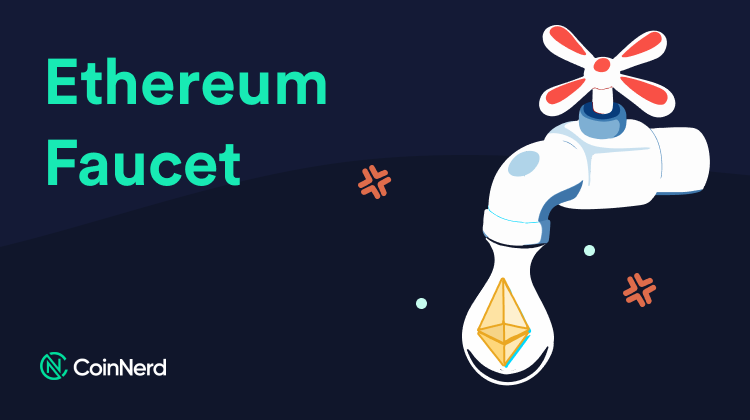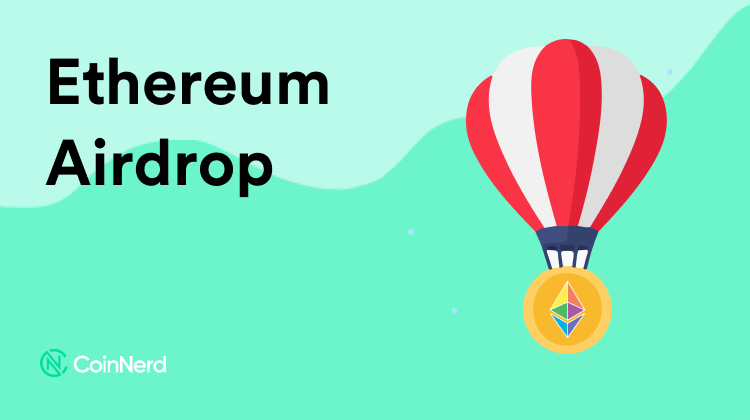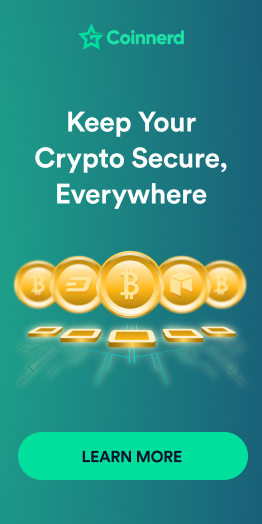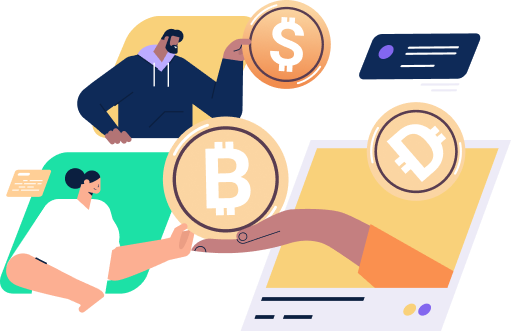Tips And Tricks For Getting Free Ethereum
Investing in Ethereum with your hard-earned money is viable but did you know that there are ways to get Ethereum online for free? If you didn’t then here’s a comprehensive list of how to make free Ethereum online.
Ethereum Faucets
There are a variety of ways to invest in the cryptocurrency market, from buying coins and trading on exchanges to mining and cryptocurrency faucets. In addition to this, other crypto-creation methods require a high level of technical expertise.
With the help of Ethereum faucets, newcomers can learn about digital assets and begin using them. Most Ethereum faucets offer a variety of ways to make money and gain knowledge, including games, ads, captchas, and loyalty programs.
An Ethereum faucet is a way to get paid for doing something good. In exchange for simple tasks like solving a captcha or clicking the link, users are given Ethereum (ETH). ETH can thus be owned by anyone without the need to purchase or mine it.

There are many ways to make money with an Ethereum faucet. The most basic way is to get paid to view ads and click on them. For completing captchas and viewing advertisements, participants are rewarded. After that, the data is put to good use in the company’s ad networks and data warehouses.
What’s not to like about getting free ETH in exchange for a few clicks of the mouse? There’s nothing wrong with it, but starting it up can take up to 30 minutes. To get some ETH, you’ll have to stay for at least 3 hours.
You’ll need to turn off your ad blocker to use an Ethereum faucet. Allowing companies to bombard you with pop-ups by disabling these ad blockers is not a good idea. To earn a small amount of cryptocurrency, previous users say it takes about 10 seconds, but it’s a small amount.
How does it work?
For an Ethereum faucet, the tasks that users must complete to receive a specific reward are central to its design. Websites and mobile apps can be configured to allocate a fixed amount of Ethereum (ETH) to a faucet pool. The bare minimum is included in this. In addition, there is a time limit for claiming the rewards, as well.
Tasks are assigned to participants as soon as they sign up. After that, they can keep earning gwei (a fraction of Ethereum) as a reward.
You won’t be able to use your regular cryptocurrency wallet to receive the rewards, which are called micropayments. To complete this task, you’ll require a micro wallet. Withdrawals from micro wallets may be subject to extremely small fees.
Pros & cons
Pros
- They allow newbies to get started quickly, but with a small number of coins.
- They educate newbies about Ethereum in addition to giving them free tokens.
- They present a low-risk investment opportunity.
Cons
- Due to their low payouts, making a significant amount of Ethereum through them may be difficult and time-consuming.
- When a user is about to withdraw the minimum amount, some sites will deny them their money or slow down their rates.
Ethereum Mining
Ethereum is a blockchain-powered digital platform. Smart contracts and ether, the native cryptocurrency, are the most well-known features of the platform. To enable decentralized applications such as marketplaces for nonfungible tokens, the Ethereum network serves a much broader purpose.
Transactions in these programs are made available to the general public and do not necessitate the presence of a central authority. When it comes to compiling and verifying each block of transactions on the Ethereum blockchain, a global network of computers is needed to ensure that each transaction is correct. When it comes to that, mining comes into play.
How does it work?
To put it simply, miners employ the power of dedicated hardware to solve difficult puzzles. The network is protected from hacking and other malicious attacks as a result of this procedure. Each time a block is successfully validated, a transaction fee is paid to the miners in Ethereum (ETH).
To create new coins and to keep track of the transactions of existing digital tokens, mining is used. In the same way that “miners” around the world contribute their computing power to verify and add all ether exchanges to a public ledger in bitcoin and other cryptocurrencies,
A blockchain is a type of public ledger. Ethereum is the name of Ether’s blockchain. Observers have a permanent and verifiable record of a transaction once it is added to the Ethereum blockchain.
Miners use a computer program to perform millions of math calculations to keep track of ether trades. Miners, on the other hand, aren’t solving all of these equations in a vacuum. They are vying with other miners around the world to be the first to verify a transaction block. This race has a winner, and the victor receives ether.
Pros & cons
Pros
- The process of adding to the network’s blockchain is sped up.
- Miners that are mining in the same network can speed up the discovery process.
Cons
- Mining farms control the rewards
- In most cases, fees are deducted from your portion of the cryptocurrency awarded to the team.
- Large power consumption.
Ethereum Airdrops
When a blockchain startup launches a virtual currency project, they typically perform an airdrop as a form of marketing. When an ICO (initial coin offering) is listed on an exchange, this campaign’s goal is to raise interest in the project and increase trading volume (ICO).
As a general rule, airdrops are advertised on a company’s website as well as on cryptocurrency forums, and the coins/tokens are sent only to current cryptocurrency wallet holders.
How does it work?
In a crypto airdrop, a crypto project gives its users free cryptocurrency in exchange for their trust.
An airdrop can be initiated in a variety of ways, but the result is always the same: the cryptocurrency investor receives some coins or cryptocurrency tokens, often for free or in exchange for completing a simple task.
Some airdrops require KYC verification to participate, so be sure to read the fine print before signing up.

If you sign up for the project’s newsletter or follow the project’s social media accounts, you may receive a crypto airdrop as a thank you for doing so. Airdropping governance tokens may also be an option for platforms. Additionally, governance tokens grant holders voting rights and allow them to influence important project decisions.
As a result of its success, other Ethereum projects began airdropping tokens as well. When it comes to airdrops, they’re nothing new, but they’ve recently become more commonplace.
Tokens are distributed to investors’ wallets in an airdrop. Like the ENS, some projects give tokens to people who have already used their product. Occasionally, projects will airdrop their tokens to prospective investors as a means of promoting themselves.
In addition, the process of receiving the airdropped tokens can differ as well. Some airdrops require investors to accept the tokens by claiming them, while others do not require investors to accept the tokens.
Before receiving their tokens, investors were required to vote on a “foundational ENS governance constitution” outlining the authority of holders, which would seem to validate the legitimacy of the ENS airdrop. Aside from the fact that scammers frequently use airdrops, An investor may be targeted by phishing scams by receiving a bogus token airdrop in their wallet.
Investing in an airdrop can be risky, so investors should be cautious. Several steps must be taken before interacting with any airdropped tokens that may have landed in your wallet.
Pros & cons
Pros
- A large array of marketing services
- Free money
Cons
- May contain pump-and-dump schemes
- You can get scammed
- Fake numbers
Ethereum Buy and Sell
Buying and selling assets are at the heart of trading, which is a foundational concept in economics. The seller receives compensation from the buyer for these goods and services. In some cases, the parties involved in the transaction may be exchanging goods and services.
How does it work?
Financial instruments refer to the assets that are traded on the financial markets. This includes stocks, bonds, currencies, futures, options, and margin products. Cryptocurrencies are also a viable option for investors.
When we say “trading,” we’re referring to the act of actively entering and leaving positions in the stock market over short periods. This assumption, however, is a tad misleading. Day trading, swing trading, trend trading, and a slew of other strategies are all included in the broad category of “trading.”
The easiest way to buy and sell Ethereum is by joining a crypto exchange platform and trading from there.
Pros & cons
Pros
- Can be very profitable
- Huge returns
- Can get started right away
Cons
- Need expertise
- High risk and reward
- You can easily lose it all
Interest Accounts (Staking and Lending)
In the world of cryptocurrency, a concept that is known as “staking” is relatively new. When you invest in a cryptocurrency, it is expected that you will give up a portion of your cryptocurrency’s value to help the network verify transactions. Tokens are the usual form of compensation for completing these tasks.
How does it work?
Proof of stake (PoS) is a consensus mechanism that is essential to staking. Proof of Work (PoW) is a consensus mechanism used in Bitcoin and many other blockchains. The blockchain relies on miners to solve a puzzle that helps validate all of the transactions contained within a block. The prize is given to the first person to solve the puzzle.
All the computational power expended by all the miners who were unsuccessful in solving this puzzle is ultimately thrown away. Some claim that proof of work is “inefficient” and that Bitcoin uses as much energy as Chile.
A proof of stake blockchain has a unique mining process. According to the number of tokens held by a given miner or node, the network assigns that miner, or node, permission to perform validation work.
Pros & cons
Pros
- Energy Efficient
- No special equipment needed
- Can get started right away
Cons
- Not very secure
- It may take some time
- Large holders often have the advantage
Crypto Bounties
It is possible to earn cryptocurrency bounty rewards by performing tasks assigned by a specific blockchain or crypto project. Blockchain projects use crypto bounties, a significant incentive mechanism, to enlist the assistance of the wider community to complete specific and critical tasks for the network.
How does it work?
Boosting a token’s initial coin offering (ICO) is a primary goal of a bounty program (ICO). ICOs, like initial public offerings (IPOs), must gain recognition to be successful. In a nutshell, crypto bounty reward programs are a fantastic way to get people excited about a new token and get them involved.
The term “crypto bounty campaign” refers to a promotional effort by a project to get the word out about its upcoming initial coin offering (ICO). In addition to posting a picture or video to promote a specific project, these marketing actions can also include posting reviews on forums and online community boards. Performing these promotional activities earns the user free or discounted tokens as a result of their participation.
It was a huge phenomenon during the ICO craze of 2017 and 2018 when bounty campaigns were launched. The promotion of bogus tokens was a common tactic of fraudulent projects employing this marketing tool. As a result, cryptocurrency investors are wary of free bitcoin giveaways and other forms of reward programs. Some ICOs and bounty reward programs were also deemed illegal by the Securities and Exchange Commission (SEC) of the United States.
Despite this, new tokens will continue to be promoted through crypto bounty reward programs. Even after the token has been successfully launched, some blockchain projects include bounty rewards. The project’s advancement is the focus of post-ICO reward plans.
Pros & cons
Pros
- Easy to get into
- Minimal effort required
- Easy to find
Cons
- Tons of bot spamming
- Scammers
- Bad experiences
Referral and Affiliate Commissions
For businesses, affiliate marketing is one of the most effective ways to attract new customers. In the crypto space, many projects have used the model to reward existing users for referring new customers to their platforms. For cryptocurrency businesses, affiliate programs can be a boon, but they can also be a boon for participants.
How does it work?
Using an affiliate program for cryptocurrency, users are given a special link to share with their contacts (and their friends). As an affiliate, you can keep track of how many new customers your cryptocurrency project has brought on, which benefits both you and your fellow participants. An affiliate reward can be as simple as a discount on trading fees or as substantial as a passive source of income for cryptocurrency users.
Affiliate programs have low risks and high potential returns because users don’t have to put any money (other than their time) into them. Affiliate programs, in which users can use a variety of methods to attract new customers – from simply messaging friends to publishing articles, blogs, and videos with affiliate links – are also extremely simple to get started with. We’ll go over a variety of cryptocurrency affiliate programs from various exchanges in the following sections.

Pros & cons
Pros
- A good way to make Eth
- Low risk and high rewards
- No special equipment needed
Cons
- Need lots of connections
- Lots of work
- You need to be active
Conclusion
To conclude there are a ton of ways to get free Ethereum online, some might require some investments in hardware like mining while some might require your attention and time like the case with affiliate programs, while some might require you to take risks like with staking.
* We hope this information will help you in your investment process, but this is not investment advice. Every investment carries risk, especially in this industry, so DYOR before making a decision.






